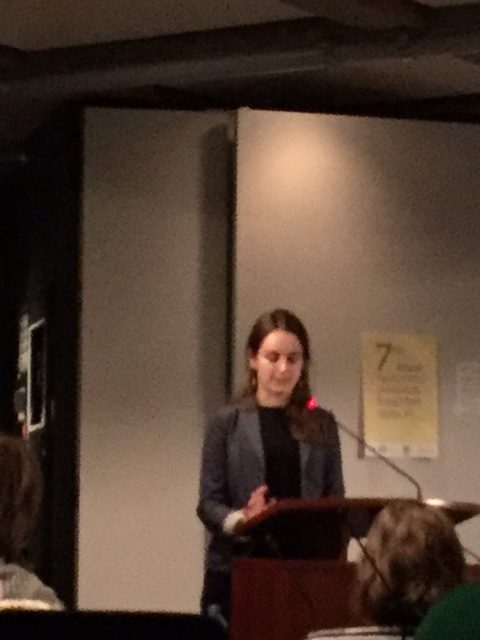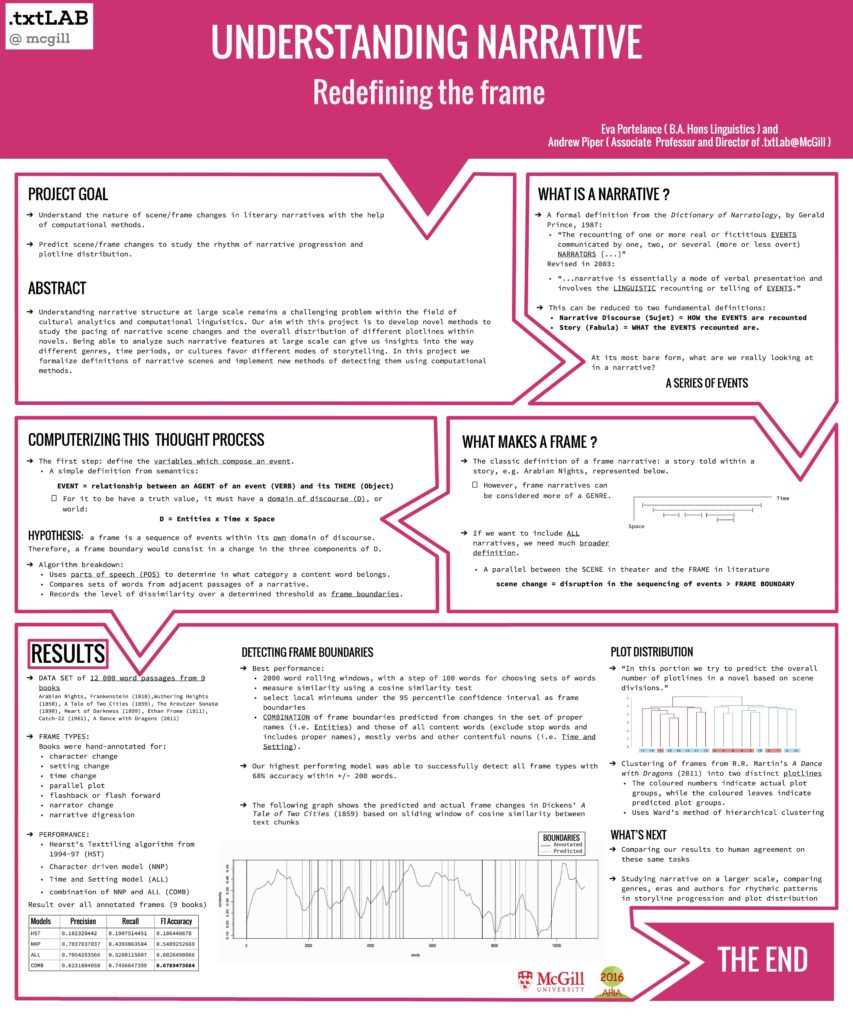Congratulations to Eva Portelance ARIA Intern for 2016
Eva Portelance presented her work this past week that was completed under an Arts Undergraduate Research Internship (ARIA). Her project focuses on the computational detection of narrative frames. It involves three steps that include a theoretical definition of a frame, writing code to detect narrative frames and comparing those to existing methods of text segmentation, and developing literary use cases for such an algorithm.
Literary theorists have long been interested in the question of narrative frames. Whether it involves changes in point of view, time, setting, or character-clusters, narrative frames are crucial ways through which information is communicated and structured in narrative form. Being able to detect these boundaries allows us to better understand the pacing and orientation of framing in literary narratives.
Portelance’s current approach is able to detect frames with about 67% accuracy across different kinds of novels. We measure these predictions against hand-annotated frames. We have since augmented these annotations with other reader annotations and are in the process of assessing how much agreement there is among readers about when and where a frame happens. While our performance leaves room for improvement (it is a very hard task), the next best segmenting tool captures frames with about 18% accuracy!
Portelance’s project also includes a second dimension which involves aggregating frames into larger “plotlines.” While we’re still debating the best way to do this — and whether “plotline” is the best way to understand them — the ability to cluster material by larger narrative threads gives us the ability to understand just how narratively diverse a given novel or work of fiction might be.
It offers we hope one more way of beginning to account for literary expression beyond purely semantic-level analysis.



1 Comment
Join the discussion and tell us your opinion.
[…] creating techniques for detecting narrative frames and plotlines […]